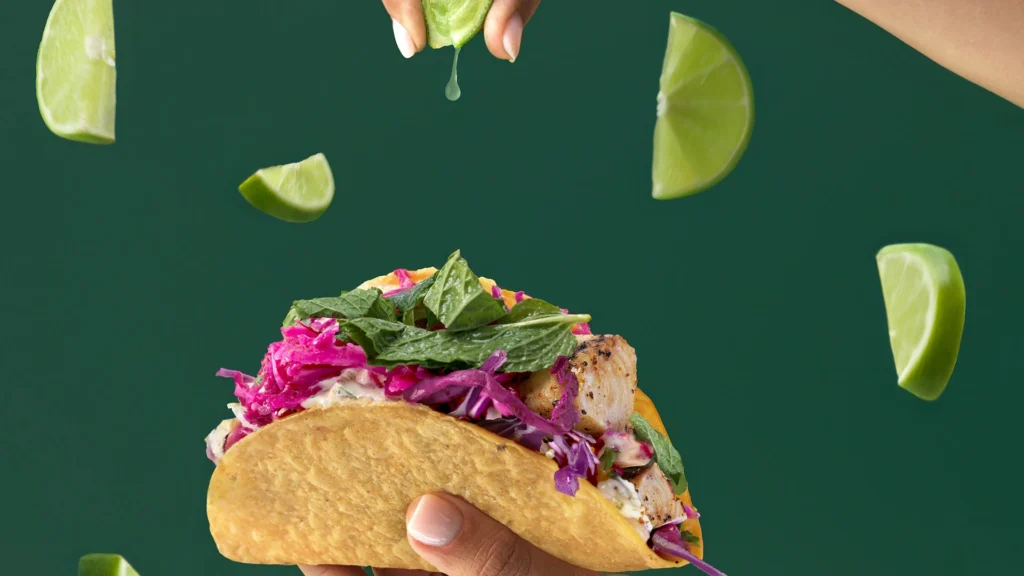Taco franchises are sizzling in the U.S. food sector. Americans devour tacos, with 99% having access to Mexican restaurants, yet Mexican cuisine represents only 6% of the nearly 800,000 U.S. restaurants. The $89 billion Mexican restaurant industry shows no signs of cooling, driven by relentless consumer demand for bold, authentic flavors.
Tacos thrive across fast food, fast casual, nightlife, and full dining experiences, making taco franchises versatile and scalable. The franchise business model slashes startup risks with proven systems, brand power, and franchisee support, letting you hit the ground running without reinventing the tortilla.
Key trends fuel this boom: a growing appetite for fresh, customizable, and health-conscious options; the cultural mainstreaming of Mexican cuisine; and the rise of fast-casual dining. These factors make taco franchises a hot ticket for entrepreneurs eyeing a slice of the market.
Key Benefits of Investing in Taco Franchises

Taco franchises deliver scalability, brand recognition, and tailored business systems. Compared to independent restaurants, opening a taco franchise offers competitive edges: managed supply chains, centralized marketing, and comprehensive training programs. For example, Lime Fresh Mexican Grill a recognized Mexican food franchise that emphasizes fresh ingredients and a fun atmosphere while reducing the guesswork for new owners through comprehensive support.
Consumer demand is relentless. Tacos appeal across demographics, blending affordability with craveable flavors. Cultural influence—think Tex-Mex, Baja, or authentic Mexican—keeps tacos trending. Plus, franchise opportunities like Lime Fresh adapt to urban or suburban markets with flexible formats. Got a fresh idea for a taco franchise model? The industry’s open to innovation, so bring it.
Taco Franchise Market Analysis & Industry Trends
The taco franchise market analysis reveals a sector ripe with opportunity but not without hurdles. Fast-casual dining is surging, with brands like Lime Fresh capitalizing on simple, fresh ingredients and approachable vibes. Health-conscious menus resonate with modern diners. Digital ordering, as seen with Lime Fresh, is reshaping customer engagement.
Profitability in the taco‑franchise space depends heavily on site selection, cost control, and memorable brand identity. While Rusty Taco succeeds with a lean menu, LIME Fresh Mexican Grill leverages operational efficiencies combined with full‑bar sales, vibrant ambiance, and a hospitality‑first culture—boosting average unit volume reported at over $2.25 million for top locations.
Of course, market pressures—from QSR giants and rising food/labor costs—persist. Yet, LIME’s focus on high‑margin streams (like cocktails), customizable formats, and energetic dine‑in vibes positions franchisees to capture affluent, experience‑seeking consumers
Understanding Costs: Taco Franchise Cost Investment Breakdown
The taco franchise cost varies by brand and format. On average, expect to invest $500,000 to $1.5 million. Here’s a taco franchise cost breakdown based on top players:
- Fuzzy’s Taco Shop: $506,000–$1,524,000 (Traditional) or $370,500–$734,000 (Taqueria). Franchise fee: $30,000–$40,000. Net worth requirement: $500,000; liquid capital: $150,000.
- Rusty Taco: $523,400–$1,120,950. Franchise fee: $25,000. Net worth: $1,000,000; liquid capital: $500,000.
- Taco John’s: $942,000–$2,300,000. Franchise fee: $25,000. Net worth: $1,000,000; liquid capital: $500,000.
- Chronic Tacos: Estimated $300,000–$800,000. Franchise fee: $40,000. Net worth: $500,000; liquid capital: $150,000.
- Lime Fresh Mexican Grill: Costs vary, typically $500,000–$1,200,000. Franchise fee: $30,000. Net worth: $1,000,000; liquid capital: $400,000.
Key expenses include:
- Franchise Fees: $25,000–$40,000, paid upfront.
- Equipment: $100,000–$300,000 for kitchen gear, POS systems, and furniture.
- Staffing: Wages, training, and benefits, varying by location.
- Operations: Rent, utilities, and inventory, with food costs fluctuating based on market prices.
Hidden costs can impact your initial investment: permitting, insurance, and unexpected construction delays. Budget 10–15% above estimates to avoid surprises. Financing options, like SBA loans, can ease the burden.
Profitability of Taco Franchises: What to Expect from Taco Franchise Opportunities

Taco franchises continue to prove highly profitable, with strong revenue potential across the category. Fuzzy’s Taco Shop, for example, reports average annual gross sales of $1.51 million per location, surpassing competitors like Del Taco at $1.14 million. Building on this momentum, LIME Fresh sets an even higher standard — with top locations averaging more than $2.25 million in annual sales in the top 50% of stores, offering franchisees a proven path to exceptional profitability.
Profit margins typically range from 10–20%, impacted by:
- Location: High-traffic urban sites outperform rural ones.
- Efficiency: Streamlined menus and staff training reduce waste.
- Marketing: the franchisor’s brand development fund fee fuels national campaigns, while local efforts drive community buzz.
To maximize your return on investment (ROI), focus on prime locations, leverage franchisor training, and embrace technology like mobile ordering. Multi-unit ownership scales profits over time. Long-term success demands reinvestment in staff, menu innovation, and customer loyalty programs.
How to Open a Taco Franchise: 6 Essential Steps to Success
Launching the best taco franchise requires a clear roadmap:
- Research Brands: Compare Fuzzy’s, Rusty Taco, Taco John’s, Chronic Tacos, and Lime Fresh Mexican Grill. Review Franchise Disclosure Documents (FDDs) for a full breakdown of costs, royalty fees, support, and performance metrics.
- Assess Finances: Ensure you meet net worth and liquid capital requirements detailed in the FDD. Secure financing via banks, SBA loans, or franchisor partnerships.
- Choose a Location: Work with franchisors’ real estate teams to find high-visibility spots.
- Complete Training: Engage in 4–7 weeks of training, covering operations, marketing, and compliance.
- Launch and Market: Use franchisor-provided marketing tools and local campaigns to build buzz. Lime Fresh emphasizes brand authenticity to connect with customers.
- Scale Smart: Reinvest profits into additional units or menu upgrades.
Growth strategies for a taco shop franchise include optimizing operations with tech, hiring skilled managers, and adapting to local tastes. Stay compliant with health codes and franchisor standards to avoid costly penalties.
Evaluating Next Steps in Your Taco Franchising Journey
Taco franchises offer a compelling investment with strong profitability, scalability, and consumer demand. The benefits of taco franchises—brand power, proven systems, and cultural appeal—make them a smarter bet than independent ventures. With average revenues hitting $1–1.5 million and margins up to 20%, the best taco franchise can deliver serious returns for dedicated owners.
The market’s ripe, but success demands diligence. Research brands, crunch numbers, and pick a location that maximizes foot traffic.
Ready to dive in? Explore opportunities with Lime Fresh Mexican Grill. Submit an inquiry today and start building your taco empire.





 Complete the form below and learn more about the Lime Fresh franchise program!
Complete the form below and learn more about the Lime Fresh franchise program!